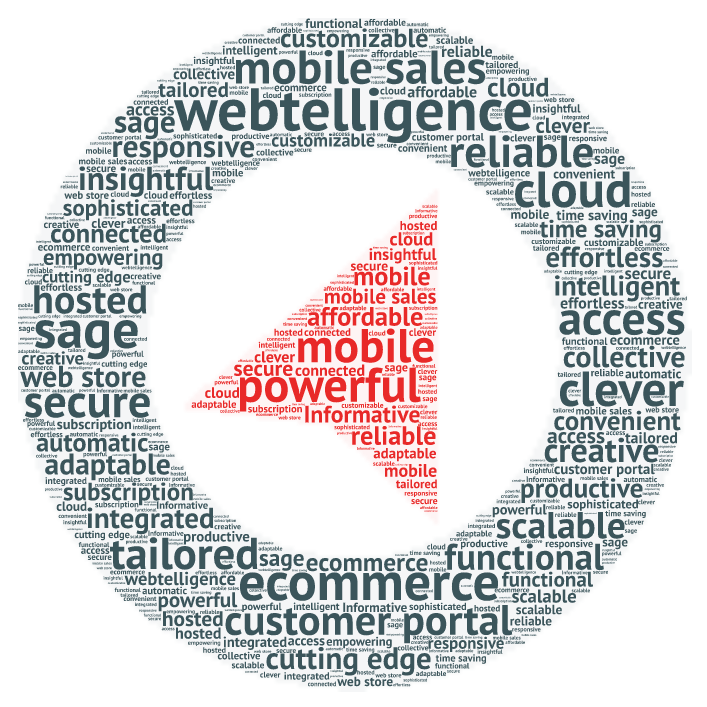Bill Gates once said that he would always hire a lazy person to do a difficult job at Microsoft because a lazy person will find an easy way to do it.
What’s your point?
I’ve spent the last almost 30 years working in the Sage community with Sage Development Partners, Sage Solution Providers, Sage customers and even a fairly long stretch at Sage. I’ve seen my share of systems, integrations, work-arounds and plain brute force methods for managing a business. Some were developed out of necessity because of a lack of financial resources, some from the lack of finding a better way. The former is understandable, to a degree. The latter is not.
Let’s apply this line of thinking to the ever growing demand for online business. And let’s further narrow our focus to a business using Sage 300. Typically these will be small to medium sized businesses (SMBs). Most don’t have huge budgets but they do have discretionary funds for marketing and necessary IT investments.
Most of these businesses will have a web presence, either a typical marketing web site or even a web store. If they have a web store it is likely not integrated to Sage 300. In their defense, you don’t know what you don’t know, so when they went looking several years ago for a solution to sell online, integration was not the big driver that it is today. So for years they’ve had their employees do the tedious, mind-numbing, soul-destroying re-keying that gets their products and prices on their web stores and their web orders into Sage. Granted we’re not digging ditches here but this is mentally draining, frustrating work.
And what do you get with such pleasurable work?

- Mistakes in the form of incorrect pricing on the web.
- Mistakes in the form of incorrectly keyed orders into Sage.
- Lost revenue from orders that just didn’t make it in for fulfilment.

What does that mean for the business?
- Unhappy customers
- Lost revenue
- Lost customer loyalty
- Staff spending time on low value tasks
- Overall, lower profits

People are now, or are at least getting to be, a lot more educated before they embark on an ecommerce strategy. If we, as Sage 300 integrated ecommerce providers, do our jobs well, and we’re trying, businesses should be more keenly aware of the benefits of an ecommerce platform that’s integrated to their back office. You may have to wade through the noise that the big guys make, but if you take the time to do your research you’ll find the benefits are worth your effort. And you’ll be surprised that the cost is very competitive.
Pay now or pay later.

Yes, there is a cost to implement a Sage 300 integrated web store. Surprisingly, you will find it less expensive than some of the big names. Making an investment now can alleviate much of the pain and problems we discussed earlier.
But what about sticking with the status quo of keeping both systems updated manually? It doesn’t cost me anything.
If you’ve been paying attention, you know that’s not true. There is a cost of doing nothing.
How much does it cost to return and reship the correct product because of a rekeying error?
How much revenue is lost due to orders just not showing up?
How much time does it take for your staff to maintain your web store and manually rekey orders?
How could you make better use of your staff’s time rather than manually maintaining your web store and rekeying orders?
What is the cost of an unhappy or lost customer?
Can you scale your business with your current staff?
Put some numbers to those questions and you’ll see just how quickly you can recover an investment in a new, integrated solution and lay the groundwork for expansion without adding front end staff.
One customer’s experience.
So what does properly integration get you?

- No data is ever re-keyed, anywhere. No more errors.
- Data is either replicated or read live, on-demand, depending on the task at hand. No need to replicate your entire Sage data structure unnecessarily.
- Your Sage system is the primary source of data. “One version of the truth”. Easy reporting.
- Your Sage inventory items are automatically available on your web store, if you want them there. Connected, not disparate systems.
- All pricing models set up in Sage for specific customers are automatically reflected on the web store. Customers get their price.
- Orders, quotes, and payments are automatically posted to Sage. No errors.
- Integrated payment processing with full PCI compliance. No risk.
- Responsive design that works just as well on a phone as it does on a desktop computer. Your customers can shop from anywhere and on any device.
- A customer portal that allows your customers to self-manage their account. More time for your CS staff for meaningful customer engagement.
- A mobile sales portal that allows your staff to be productive wherever and whenever. Full access to customer data and your product catalogue to sell at your customers’ convenience, not yours.
- A tailored shopping experience that speaks to your customers about your products. Your brand identity and image. No templates.
- Lower operating costs, higher staff productivity, better customer service and loyalty, capacity to grow, more profit
So get lazy.
That brings us back to where we started. In my mind, the easy way to do a web store is to have it integrated.
- Sage is the primary source of data and any changes made there are automatically reflected on your web store.
- Your customers get what they ordered the first time and at the price you set for them.
- Your staff spend their time engaging in more meaningful interactions with customers to increase adoption of your web store and grow sales.
- Customer satisfaction and loyalty improve.
- Revenue and profits grow.
Is that lazy or just plain smart? You decide.

